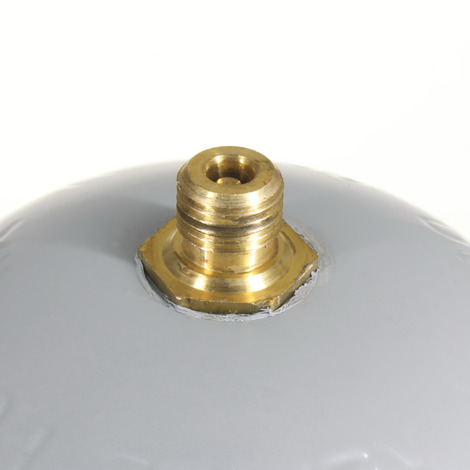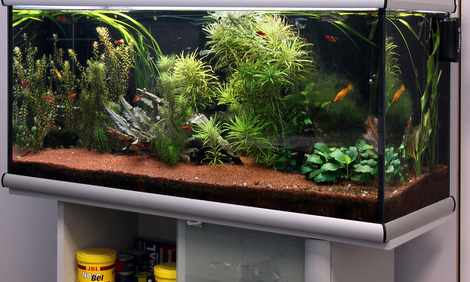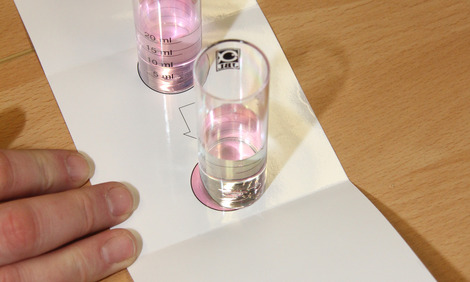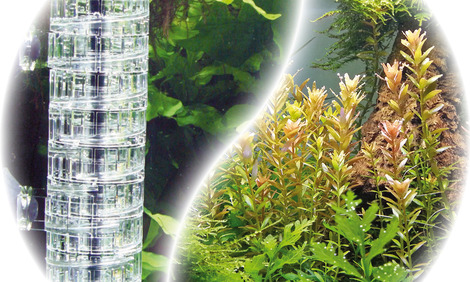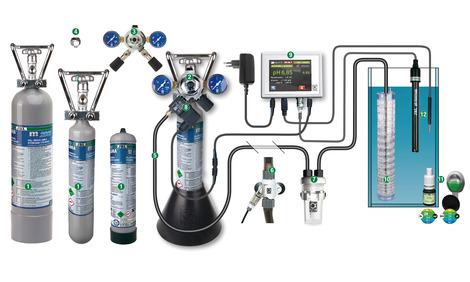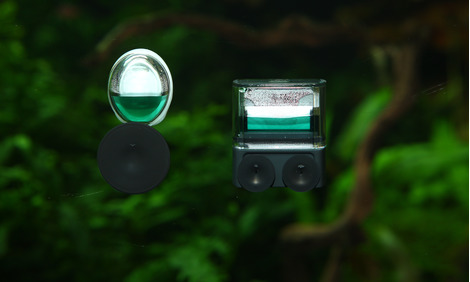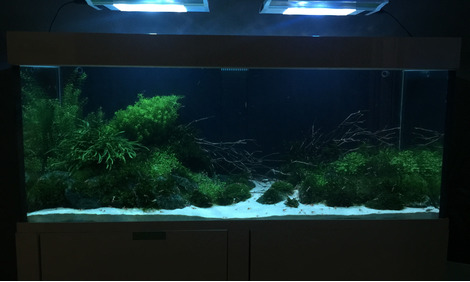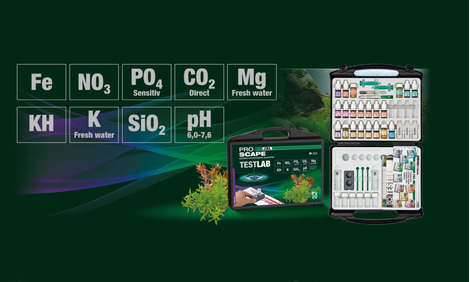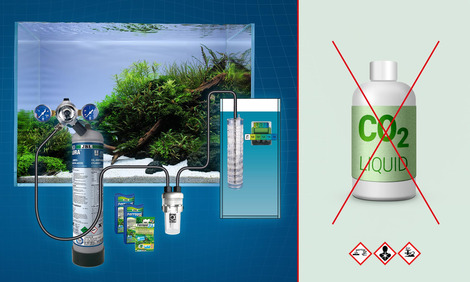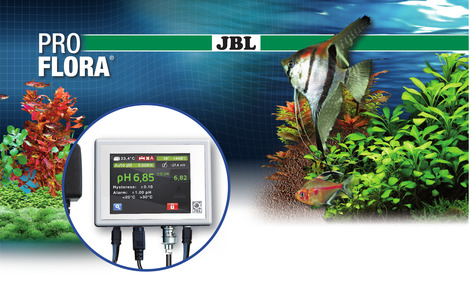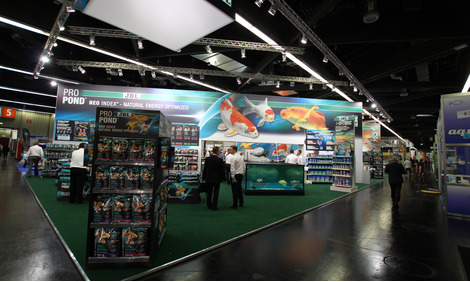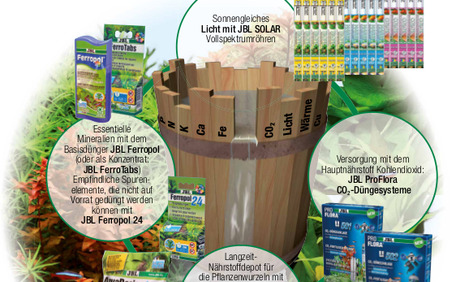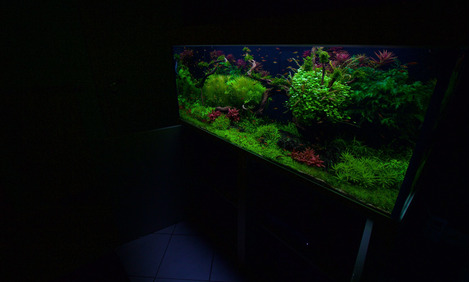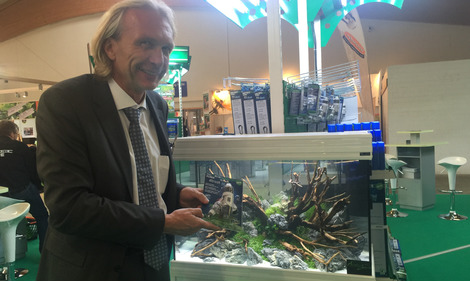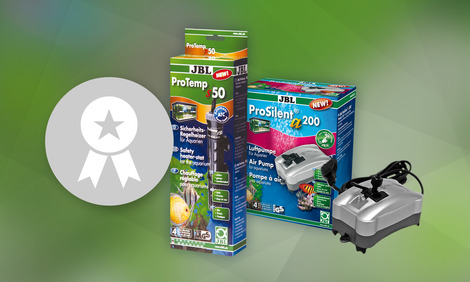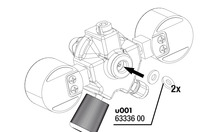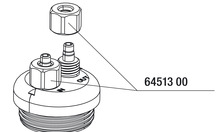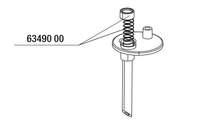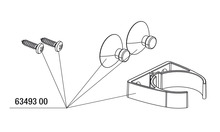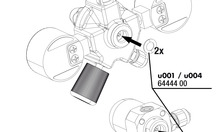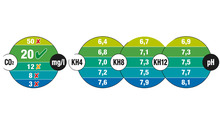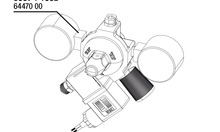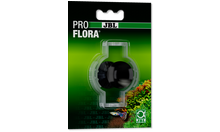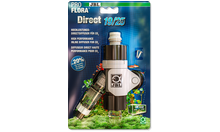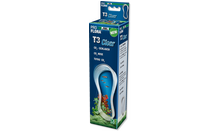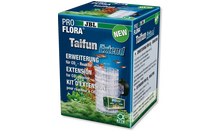Питание для аквариумных растений
Растения снабжают обитателей аквариума жизненно важным кислородом, предотвращают рост водорослей, удаляют вредные вещества, служат укрытием и снижают количество болезнетворных микробов. Установка удобрения растений от JBL снабжает растения основным питательным веществом СО2 через воду. Растения потребляют его через листья.
Простая сборка
Установка полностью готова к подключению. Навинтите редуктор давления на запасной баллон с CO2. Соедините редуктор шлангом с диффузором в аквариуме. СО2 поступает в аквариум и растворяется в воде с помощью диффузора. Подачу CO2 можно отключить на ночь с помощью промежуточного электромагнитного клапана (в комплект не входит).
Безопасность
Благодаря обратному клапану вода не попадает в баллон. Диапазон системы для подачи CO₂ зависит от различных факторов. Важны карбонатная жёсткость, количество и виды растений и сила движения воды на поверхности. Баллона 500 г, который не отключают ночью электромагнитным клапаном, при базовых настройках хватит примерно на 4 месяца.
JBL PROFLORA u501
СО2-система для удобрения растений, полный комплект
- Система для подачи СО2 для оптимального ухода за быстро и медленно растущими растениями в пресноводных аквариумах до 400 л (макс. 120 см)
- Соберите систему, установите диффузор и настройте подачу СО2 так, чтобы длительный тест показал идеальное значение
- Профессиональный уход за растениями: точн. дозир. через редуктор. Равном. поток, эффективн. растворение благодаря расширяемому диффузору. Контроль: сч. пузырьков с защитой от обрат. потока и тест на CO2 и рН. Остат. давление отображается на манометре
- Шланг не соскальзывает благодаря резьбовому соединению, обратный клапан препятствует попаданию воды в баллон
- В комплекте: одноразовый CO2-баллон 500г, фитинг, редуктор, диффузор JBL Taifun, счётчик пузырьков, специальный шланг 3 м, обратный клапан, длительный тест CO2/pH, жидкое удобрение 2х100 мл, ежедневное удобрение
Это вас заинтересует
JBL PROFLORA u501
Характеристики
| Вид животного: | Аксолотль, Аравановые, Барбусы, Вуалехвосты, Вьюны, Гуппи, Даниоподобные, Дискусы, Живородящие карпозубые, Золотые рыбки, Иглобрюхие, Карликовые креветки, Килли, Лабиринтовые рыбки, Многоперовые, каламоихты, Моллюски, Молодняк, Петушки, Радужницы, Ракообразные, Рыбы-бабочки, Сомы, Тетры, Улитки, Фловер хорн, Хоботнорылые, Цихлиды (Южная Америка), Эпиплатисы |
| Размер животного: | Для животных любого размера |
| Возрастная группа животного: | Любые аквариумные рыбы |
| Объем жизненного пространства: | 400 л |
| Материал: | Пластик (ПС), металл (сталь), металл (латунь) |
| Цвет: | серый / чёрный / прозрачный |
| Условия транспортировки: | Во время хранения и перевозки берегите от прямых солнечных лучей и обеспечьте вентиляцию. |
Электронная этикетка / осветительное средство
| Ртуть: | Нет |
| Диммируемый: | Нет |
Технические данные
Yes, this is possible without any problems. The JBL PROFLORA CO2 CYLINDER 1200 U also fits the older pressure reducers of the JBL PROFLORA u range.
No, because this can lead to the destruction of your pressure reducer. To ensure safe operation, all storage cylinders should only be operated upright. Never operate them in a lying position or upside down.
You need the enclosed Allen key for the conversion if you want to adapt your ProFlora u system onto the refillable cylinder of the m series. The ProFlora Adapt u-m is to be mounted as adapter.
At first the air hoses and special CO2 hoses can easily be pushed on the connection piece. The hoses harden more and more as the months go on and can only be removed from the connection piece using great force. If you pull the hose hard it will only strain the connection, which could, in the worst case, even break off. Instead cut the hoses you want to remove laterally at the ends and carefully remove them. For this it’s always advisable to install hoses with some reserve in its hose length.
The cylinder pressure of 50 – 60 bar, depending on the room temperature, remains constant until the cylinder is almost completely empty.
You can read the tare weight on label of the u500 CO2 cylinder. According to this a full u500 CO2 cylinder weighs 1140 g tare + 500 g filling.
Owing to a production fault a green colour change may not occur with the batches 1000 and 1001, despite increased CO2 supply.
Should you have one of the above mentioned batches, you can request a new refill set free of charge upon presentation of the sales receipt and a photo of the batch number. Please contact our customer service under: https://www.jbl.de/support/
There is no general answer to this question, as we do not know what the desired number of bubbles for your aquarium is. One bubble contains approx. 0.125 mg CO2, which corresponds to 4 million bubbles for a 500 g cylinder. At a consumption of 10 bubbles per minute (600 bubbles per hour), this corresponds to 6667 hours, which in turn corresponds to around 277 days or slightly longer than 9 months of unchanged CO2 supply.
Please note that this is a rough estimate and does not represent a guarantee about how many days you can actually get out of one pressurised gas cylinder.
You can dispose of the empty cylinder as household waste or by taking it to scrap-metal recycling. It is important that the cylinder is completely empty.
Проблемы с водорослями в аквариуме никогда не бывают следствием одного фактора или условия, всегда влияет сочетание различных факторов, включая свет, внесение удобрений, подмены воды (в частности, как часто и сколько), питание, количество обитателей и, конечно, конкретные параметры воды.
Красные водоросли, по крайней мере классическая борода, согласно многолетним наблюдениям, появляются при следующих условиях в порядке убывания:
1) слишком мало двуокиси углерода (до 100% аквариумов), значение рН в зависимости от карбонатной жесткости в любом случае должно находиться в слегка кислой области.
2) повышенный уровень фосфатов (более 90%), часто помогает удаление фосфатов, например, с помощью JBL PhosEx ultra.
3) слишком мало удобрений, и вносят их слишком нерегулярно (железо всегда должно присутствовать, по крайней мере, в минимальных количествах).
4) слишком мало подмен воды, рекомендуется для борьбы с водорослями еженедельно подменивать более 30% воды.
5) слишком мало быстрорастущих растений.
Нет, не подходит, так как резьба у одноразовых баллонов не такая, как у редуктора JBL ProFlora u401.
The rapid drop in the cylinder pressure shortly before the end of the charge does not constitute grounds for complaint, and instead, is normal and unavoidable from a technical standpoint.
Reason: The cylinder is filled approximately halfway with liquid carbon dioxide. You remove gaseous CO₂ from the cylinder; the corresponding share of the liquid CO₂ passes to the gaseous phase; the pressure remains constant. It isn’t until less CO₂ passes from the liquid phase to the gaseous phase that the cylinder pressure begins to drop.
This means your system is functioning normally.
The retaining spring in the check valve fits very tightly and ensures that no water can return. Therefore the air pressure of a diaphragm pump or our breath is not strong enough to open the spring. The valve can be opened by the pressure of the ProFlora bioCO2 systems and also the m and u series. Check valves used in air systems have a smaller counter-pressure and are also part of the JBL range.
Пожалуйста, убедитесь, что обратный клапан (JBL SafeStop) установлен правильно. Это последнее звено перед реактором, его нужно устанавливать согласно стрелке, указывающей на реактор (JBL Taifun).
1. Increase the volume of water changed each week to about 30-50%.
2. Fertilise regularly after each water change, e.g. with JBL Ferropol.
3. If necessary add a daily dose of Ferropol 24.
4. If algae promoting nutrients (especially phosphate) are present in higher quantities, use e.g. JBL PhosEx ultra to keep them under control.
5. Most important is carbon dioxide. Beard and brush algae are always a sign that there is too little carbon dioxide in the water. If a CO2 system is in use, increase its dosage. Alternatively consider installing a CO2 system like JBL ProFlora u401 or m601.
6. Put in fast growing stem plants as nutrient competitors.
7. If there is strong current, reduce it slightly.
Please note two important points:
1) Cylinder: Reusable cylinders are TÜV tested and this is stamped on the cylinder. This test needs to be renewed every 10 years, with the bottom of the cylinder and the valve sealing and threaded joint being tested.
2) The carbon dioxide: Depending on its concentration, carbon dioxide is harmful in the air.
The respiratory rate and pulse rate increase at a carbon dioxide concentration of 3-5%. Other symptoms are headaches, discomfort and ringing in the ears. Carbon dioxide concentrations of 8-10% and more cause these symptoms to become more pronounced. This may lead to cramps, fainting, apnoea and death from suffocation.
One 500 g cylinder contains 500 g CO2. This is equal to 11.36 mol (chemical substance amount unit). One mol of a gaseous substance has a volume of 22.414 l under normal conditions (273.15 K, 101325 Pa), so that 500 g of CO2 result in a volume of 254.7 l. CO2 is heavier than air, so that it collects on the ground. This corresponds to a CO2 height level in the range of 12.735 mm = 1.27 cm for a room of 20 m². If it is mixed completely with the air in a room of 20 m² and a height of 2.5 m (corresponds to 50,000 l), this corresponds to a maximum gas concentration of 0.5 volume %, which is well below the dangerous level.
During aeration and/or when there is a strong current, a gas equilibrium is achieved between the ambient air and the water. As a result a corresponding but very low CO2 content occurs too. BUT this low CO2 content is far too low to for most aquarium plants to thrive. The aquarium owner is therefore dependent on an additional CO2 supply by a CO2 fertiliser system. The higher CO2 content this achieves is reduced or, as commonly referred to in aquatics, expelled by the aeration and strong current. Therefore well planted aquariums should only be slightly aerated at night, if required.
-
Скачать
JBL PROFLORA u501Geb ProFlora m501-503 u501-502-504, m2003 V02



